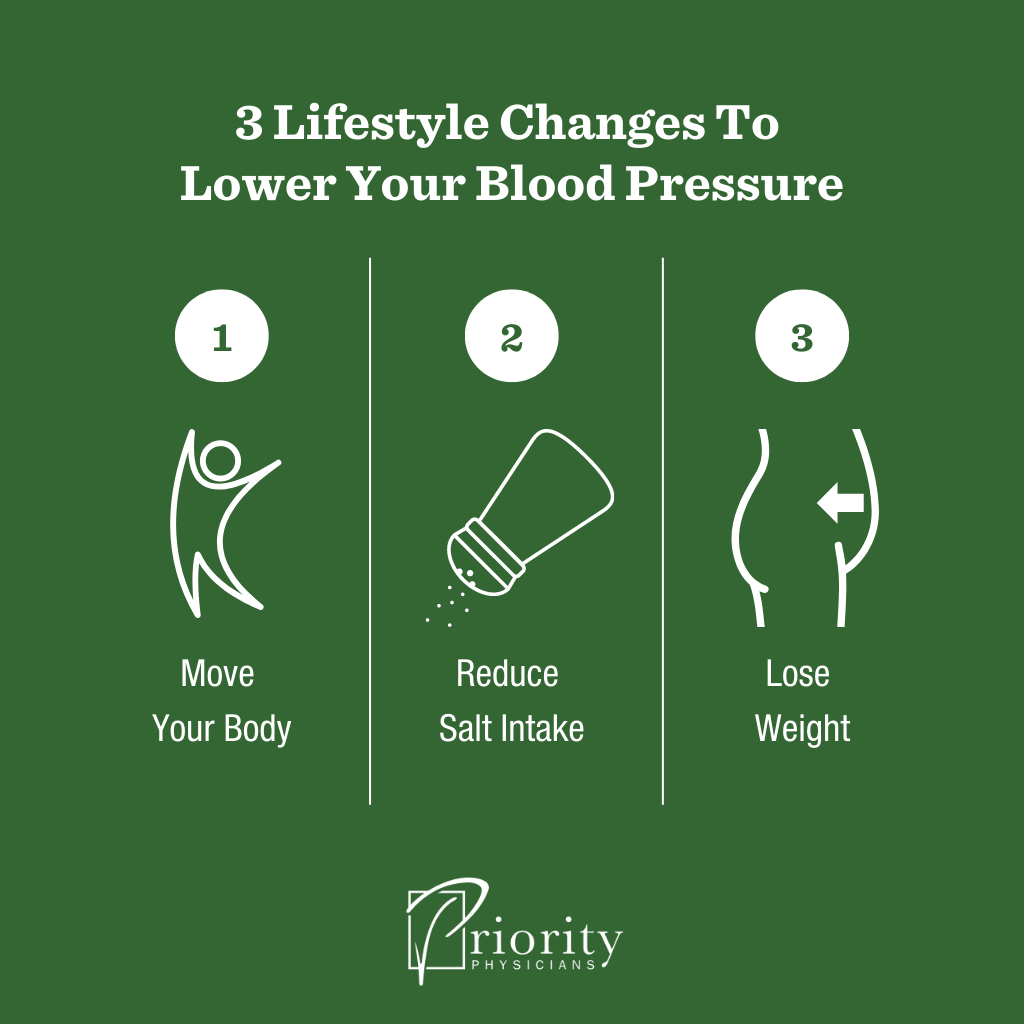Cardiovascular disease is the number one killer of humans in the world.
This same disease process causes both heart attacks and strokes; one is just in the heart and the other in the brain.
More than 800,000 people in the U.S. die from heart disease every year. Nearly a quarter of those are under the age of 65.
On top of that, every 40 seconds in the U.S., someone suffers a stroke. Every 3.5 minutes, someone dies of one.
Why are we talking about this? It’s because high blood pressure is the number one cause of strokes and heart attacks, and that’s an area where we can take action.
Why It’s Important To Catch High Blood Pressure Sooner Rather Than Later
Regardless of family history, it’s important for everyone to know their blood pressure. And if you find you have high blood pressure, it’s important to work toward lowering it.
Why?
Tiny capillaries, like the ones found in your eyes, kidneys, brain, and other delicate tissues, are very sensitive to pressure.
When these tiny capillaries experience sustained high blood pressure, they eventually blow out. This can lead to tissue and organ damage and cause all kinds of significant health problems, including blurred vision or blindness, erectile dysfunction, and kidney damage.
By catching high blood pressure early and committing to lowering it, you can save those capillaries and maintain the elasticity of your blood vessels.
But if you don’t take charge of managing your blood pressure, you could risk serious damage to your health.
What Are the Risks of High Blood Pressure?
Left unregulated, high blood pressure causes significant long-term health problems. The most serious concerns are heart disease, heart attack, and stroke. These can all result in death or, at the very least, a major decline in quality of life.
Uncontrolled high blood pressure also damages the tiny blood vessels in the brain, interrupting blood flow. Research shows that this can lead to a form of dementia called vascular dementia, and perhaps even Alzheimer’s disease.
In men, long-term high blood pressure can lead to erectile dysfunction. With high blood pressure, the blood vessels narrow, restricting blood flow. This makes getting or sustaining an erection very difficult.
High blood pressure can also damage the blood vessels in the eye. When this happens, blood can’t flow to the retina, causing blurred vision or loss of sight. This is an even greater risk for people with type 2 diabetes.
Sustained high blood pressure is the number two cause of kidney failure in the U.S. Even moderately high blood pressure can cause kidney damage over a few years. And living with kidney damage means living with a significant decrease in quality of life, depending on medication, going in for dialysis, and perhaps even having a kidney transplant.
How To Read Your Blood Pressure
Now that you know why blood pressure is so important, you need to know what those numbers on your blood pressure reading are and what they mean for your health.
Blood pressure readings show systolic pressure over diastolic pressure.
Systolic blood pressure — the top number on your blood pressure reading — is the maximum pressure your cardiovascular system sees. This is the peak force your arteries experience when your heart contracts, or beats, to push blood through your system.
Diastolic blood pressure — the bottom number on your reading — is the lowest pressure your cardiovascular system sees. It’s the level of pressure in your arteries between heartbeats, when your heart is fully relaxed.
Both readings are important.
The difference between the two numbers, which we call pulse pressure, is also an important factor in blood pressure.
The ideal blood pressure is around 115/70. By subtracting the bottom number (diastolic) from the top (systolic), you get a healthy pulse pressure of 45.
Often, when your systolic blood pressure rises, your pulse pressure increases. A higher pulse pressure means an increase in your risk of cardiovascular disease and other blood-pressure-related problems.
Top 3 Lifestyle Changes To Lower Your Blood Pressure
If you notice your blood pressure creeping up, or even if it’s been high for a while, what can you do? The answers aren’t exciting or revolutionary, but they’re simple and they work.

Move Your Body
One of the biggest things you can do to lower your blood pressure is to get moving. Moving and exercising may initially increase blood pressure temporarily, but over time and with consistency, your blood pressure will fall.
You can start by going for a walk every day. Then challenge yourself with longer or faster walks. You don’t have to be a runner or an athlete. Just get moving.
Reduce Salt Intake
Another crucial step is to reduce your salt intake. Salt intake directly correlates to high blood pressure.
In America, salt is in everything. Prepackaged foods, restaurant food, fast food, even the sauces and seasonings you put on healthy meals at home. Track your sodium intake and try to keep it below 2,300 mg per day if you don’t have high blood pressure, and below 1,500 or even 1,000 mg if you do.
Lose Weight
Weight affects so many factors of health, and blood pressure is one of them.
It’s pretty straightforward: When your weight goes up, your blood pressure goes up. When your weight goes down, your blood pressure goes down. In fact, losing 5–10% of your body weight is the equivalent of taking one blood pressure medication.
So if your doctor says you need to start a blood pressure medication, you can always ask about losing weight instead. A good doctor will be thrilled you’re willing to put in that effort.
Should You Use At-Home Blood Pressure Cuffs?
In a word, no.
To clarify, if you belong to a direct primary care practice, then you have a doctor paying close attention to your health — and, specifically, to your blood pressure.
I don’t recommend at-home blood pressure cuffs because they can cause anxiety. If you’re taking your blood pressure three times a day and stressing out over the numbers, those numbers stay high. You’re stuck in a feedback loop and doing more harm than good.
With blood pressure, we’re more concerned about the ballpark range than individual, daily readings. So, I recommend you make great lifestyle changes at home, but leave the monitoring (and the worry) to your doctor. It’s their job.
That said, this doesn’t mean we aren’t interested in your blood pressure outside the doctor’s office.
We know your blood pressure might be different in the exam room than it is in daily life. And while at-home blood pressure cuffs can create more problems than benefits, occasionally using the blood pressure station at a pharmacy or grocery store and recording the result for your doctor is a great alternative.
Why It’s Important To Know Your Blood Pressure and What To Do About It
High blood pressure is a serious concern that affects every part of our bodies. To keep it from eroding your quality of life, it’s important to know your blood pressure and take steps to lower it.
Be sure to visit your doctor regularly, get your blood pressure checked, and pay attention to the results. If your blood pressure is high, evaluate your habits and incorporate the recommendations that could save your life.

